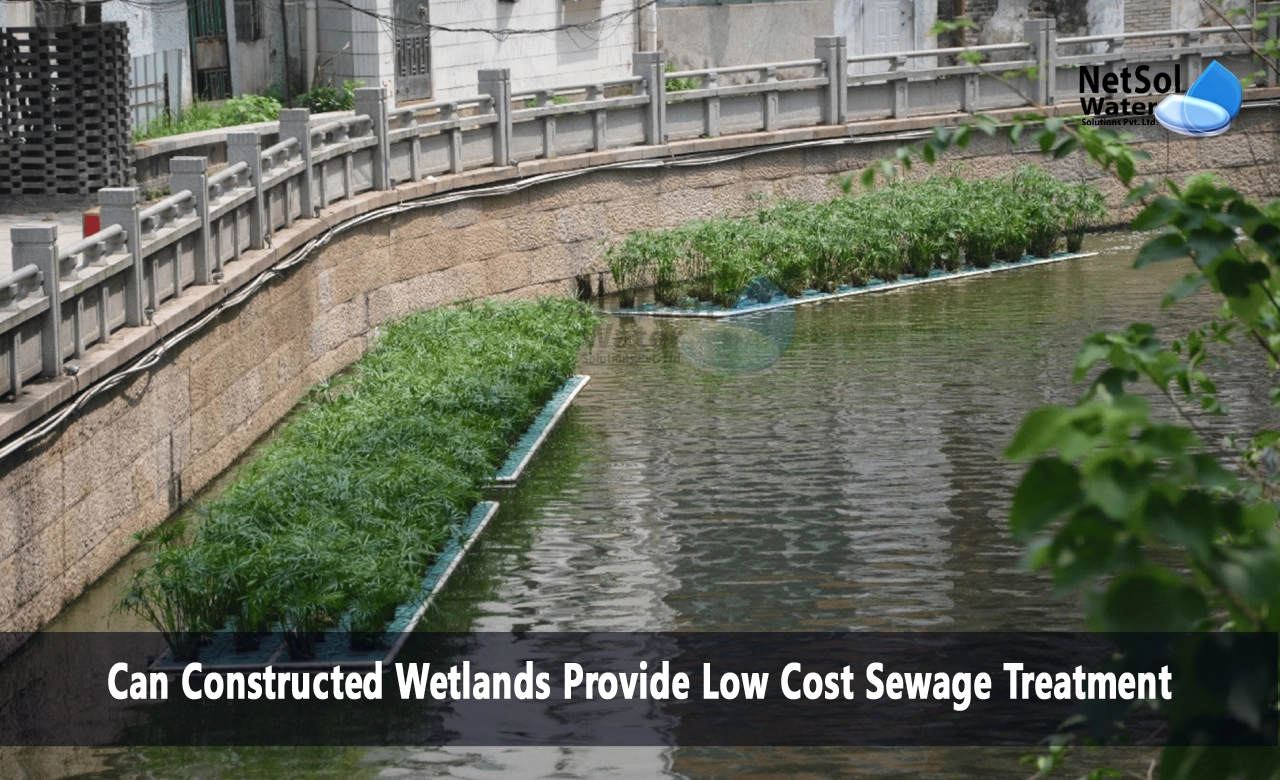Can Constructed Wetlands Provide Low-Cost Sewage Treatment?
As populations grow and urban areas expand, finding sustainable and affordable ways to treat sewage and wastewater is becoming increasingly important. Constructed wetlands are one potential low-cost, natural treatment solution. Constructed wetlands are man-made marshy areas designed to replicate the water purification functions of natural wetlands. They utilize plants, soils, microbes, and wetland processes to remove contaminants from wastewater. Constructed wetlands have shown promise for small communities and decentralized areas looking for an environmentally friendly and cost-effective alternative to conventional sewage treatment. We will examines the potential of constructed wetlands to serve as low-cost treatment systems for sewage and wastewater.
How Constructed Wetlands Work?
Constructed wetlands are shallow excavated basins filled with soil or gravel and planted with wetland vegetation. The wetlands are designed to control wastewater flow, so it slowly passes through the wetland environment. This allows a series of complex physical, chemical, and biological processes to occur that treat the wastewater.
First, the vegetation and soils filter out solids, absorb nutrients, and remove some pathogens and toxins from the water. Microbial communities on the plant roots and soils then break down organic matter and cycle nutrients. The wetland environment also facilitates sedimentation, precipitation of minerals, and adsorption of materials onto soil particles, further removing contaminants. Aerobic and anaerobic areas within the wetland foster diverse microbial processes for breaking down waste. Lastly, exposure to sunlight facilitates disinfection.
Different types of constructed wetland designs utilize various combinations of these processes. Common configurations include:
1- Surface flow wetlands: Wastewater flows above ground through planted gravel beds.
2- Subsurface flow wetlands: Wastewater flows beneath the surface through planted soil beds.
3- Floating aquatic plant systems: Plants with floating leaves filter the water.
4- Hybrid designs: Combinations of surface and subsurface flows.
By harnessing a diversity of natural processes, constructed wetlands can effectively treat many types of wastewater with minimal energy inputs.
Advantages of Constructed Wetlands
Constructed wetlands offer a number of advantages over traditional wastewater treatment methods:
1- Cost savings: Constructed wetlands have relatively low construction, operation, and maintenance costs compared to mechanical treatment systems. Once established, energy inputs are minimal.
2- Low tech and simple operation: Wetlands primarily rely on natural processes for treatment, reducing the need for advanced technology. Maintenance is limited to periodic vegetation harvesting, debris removal, and inspections.
3- Nutrient recycling: The nutrients in wastewater are taken up by plants or microbes instead of being wasted. Harvested plant material can be used as fertilizer.
4- Wildlife habitat provision: Constructed wetlands create aquatic and riparian habitat and increase local biodiversity.
5- Adaptability: Wetlands can be designed for different climates, soil types, pollutants, and flow volumes. Hybrid designs allow for adaptation and phased construction.
Overall, constructed wetlands can provide simple, affordable, sustainable wastewater treatment with many co-benefits. The technology is well-suited for small communities, remote locations, and developing regions.
Limitations of Constructed Wetlands
Despite their many advantages, constructed wetlands also come with limitations and challenges:
1- Land requirements: Constructed wetlands need 3 to 10 times more land area than mechanical treatment plants. This can limit applications in urban areas where land availability is restricted.
2- Climate dependence: Wetland performance is limited in extreme cold or hot climates. Supplemental water or shade may be needed to maintain vegetation.
3- Variable treatment performance: Pollutant removal efficiency can vary seasonally and annually with changes in temperature, rainfall, plant growth cycles, and water volumes. Careful design and monitoring is needed to achieve regulatory discharge limits.
4- Pretreatment requirements: Constructed wetlands cannot handle extremely high solids loads. Septic tanks, settling ponds, or initial treatment to filter large solids is required.
5- Risk of vegetation die-off: If plants die, pollutant removal capabilities decline. Maintaining robust and diverse vegetation is essential.
6- Potential for mosquitos: Stagnant water risks must be addressed through design and operational controls.
7- Long startup periods: It can take 2-5 years for wetlands to stabilize and achieve optimal treatment performance.
Overall the effectiveness of constructed wetlands depends on appropriate design, plant selection, maintenance, and integration with pretreatment and disinfection systems. If applied within their limitations, constructed wetlands can sustainably treat sewage and wastewater for small communities worldwide.
Conclusion
With ever-growing wastewater volumes, new solutions are needed for affordable and sustainable treatment. Constructed wetlands utilize natural processes occurring in wetland environments to effectively remove a variety of pollutants from sewage and wastewater. Constructed wetlands can provide low-cost, low-tech, low-energy treatment suitable for small communities, decentralized areas, and developing regions. While wetlands have limitations regarding land requirements, climate, variability, and startup time, they offer many advantages in terms of cost savings, simple operation and maintenance, nutrient recycling, and wildlife habitat provision. With careful planning and design, constructed wetlands can serve as a viable eco-friendly wastewater treatment alternative in many situations. Further research and development of design standards, implementation strategies, and integration with other technologies can continue advancing the use of constructed wetlands for sustainable sewage and wastewater management.
Netsol Water is Greater Noida-based leading water & wastewater treatment plant manufacturer. We are industry's most demanding company based on client review and work quality. We are known as best commercial RO plant manufacturers, industrial RO plant manufacturer, sewage treatment plant manufacturer, Water Softener Plant Manufacturers and effluent treatment plant manufacturers. Apart from this 24x7 customer support is our USP. Call on +91-9650608473, or write us at enquiry@netsolwater.com for any support, inquiry or product-purchase related query.



